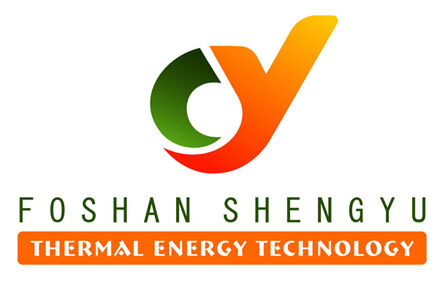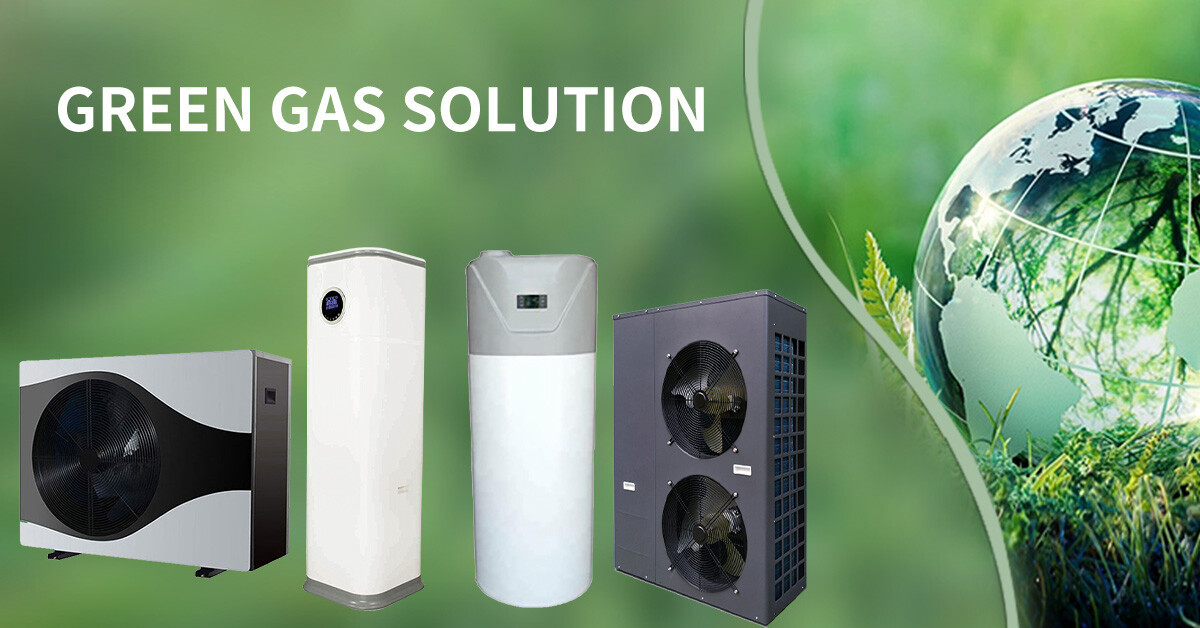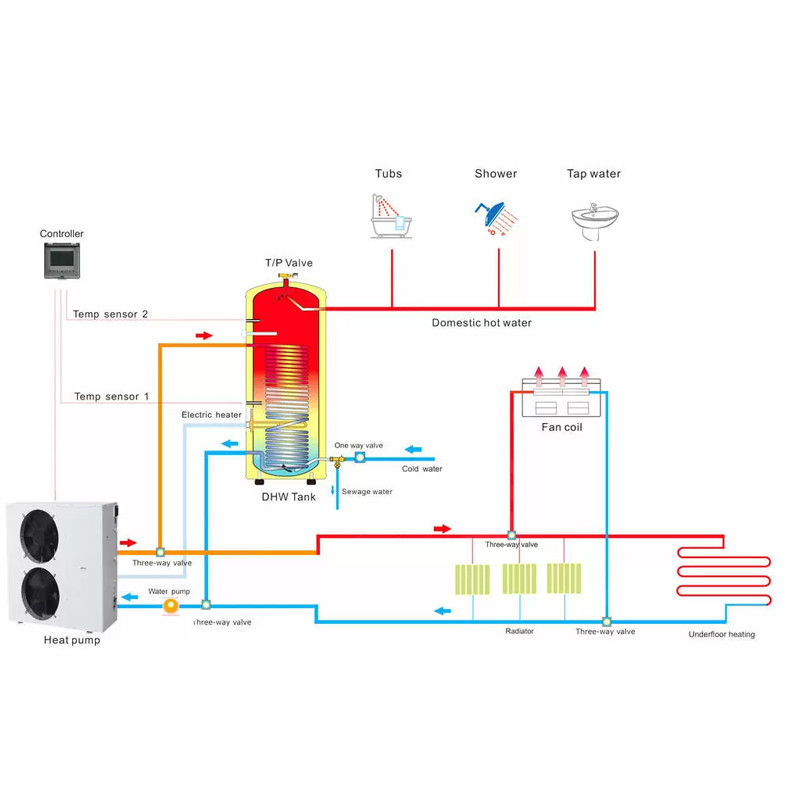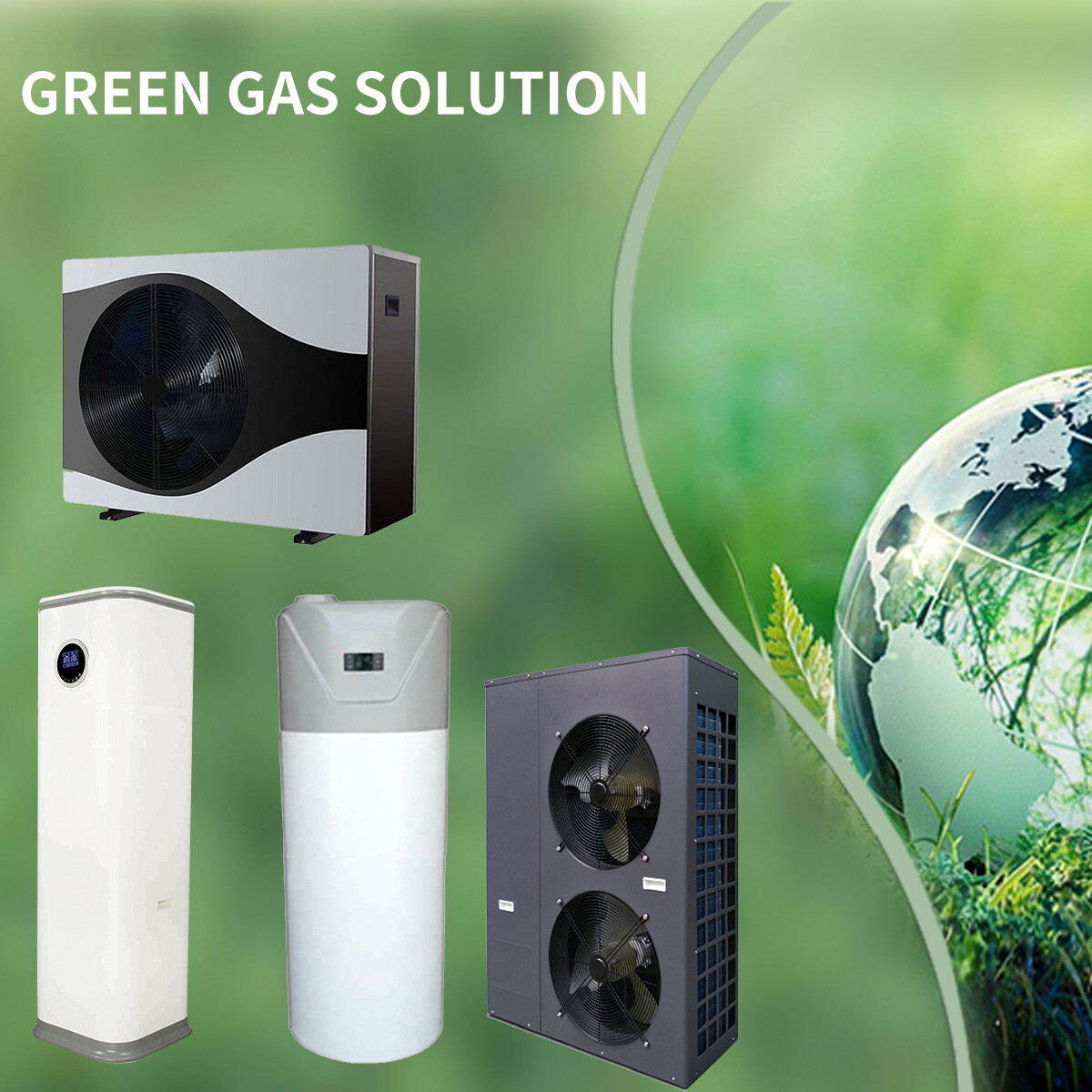
About Us
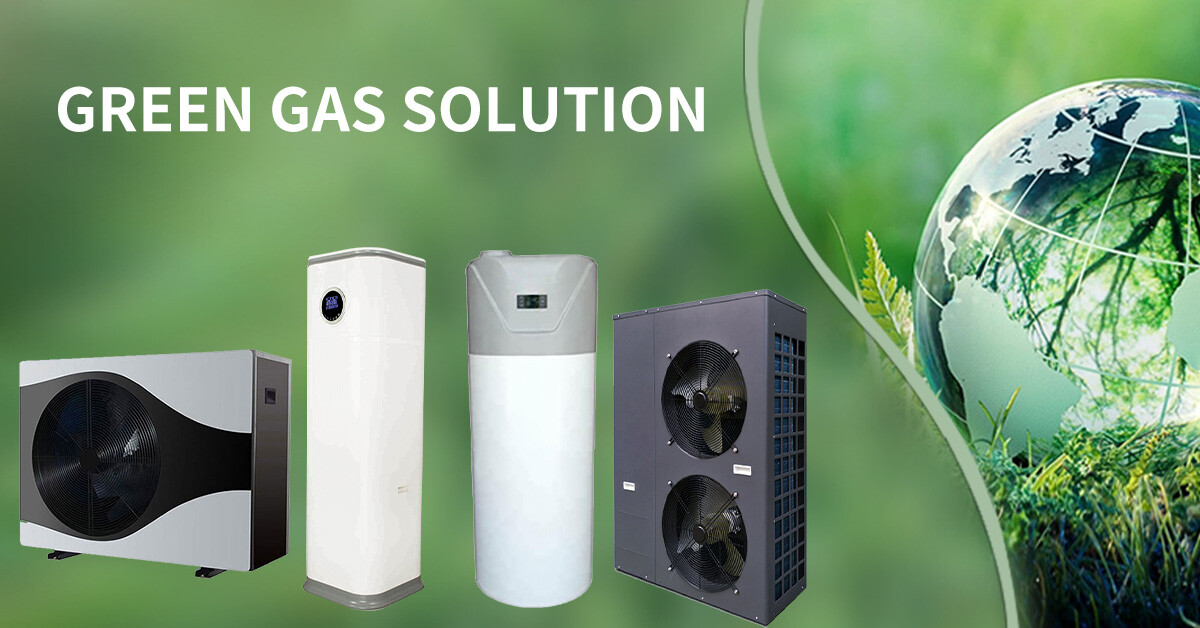
Exploring The Different Types of Heat Pumps Available for Homes
As the world is dealing every day with the consequences of global warming, one can notice that one of the outcomes is getting summers hotter and winters even colder. So, indeed, it gets hot and cold all over and heat pump installations and AC units are needed, as with the coldest winter on record for Beijing in 2023. This guide will make those seasons more livable by introducing you to various types of heating pumps.
Types of Heating Pumps
The correct type of heat pump to be used for your home will be decided by fully grasping the diversity of types. These are with three general categories, each one having its own benefits and drawbacks.
Let's take a closer look:
Now that we have a better idea of the heating pump types, let's take a closer look at the pros and cons of each to further explore the different types of heat pumps available for your home.
All-in-One Heat Pumps
Pros:
- Extremely space-efficient
- Very easy installation
- Doesn't cost as much as a split system
Cons:
- Relatively noisier
- The entire system is outside and therefore may need frequent maintenance
- Suitable for smaller spaces.
Split Heat Pumps
Pros:
- More efficient.
- Better thermostat/temp control.
- Relatively quieter.
- Flexible in terms of installation.
Cons:
- Installation might be more complex
- Higher space requirement
Normal On-Off Heat Pumps
Pros:
- Lower initial cost,
- Straightforward operation,
- Easier maintenance.
Cons:
- Cycles constantly between on and off. This means that the energy consumption peaks as the pump cycles.
- The frequent on and off cycles means more maintenance requirements.
Inverter Heat Pumps
Pros:
- More energy efficient.
- Doesn't require as many repairs.
- Maintains a much more "level" temperature.
Cons:
- Costs on the higher end of the spectrum.
- The technology involved is relatively more complex. This means that it also has relatively more complex maintenance requirements.
Now that we have the pros and cons of different types of heat pumps covered, let's take a closer look at its installation.
Heat Pump Installation Considerations
Some of the most important aspects to consider when it comes to installing heat pumps are the upfront cost, installation cost, and the overall operation costs. Naturally, indoor and outdoor installations both have different considerations. Let's take a closer look at these:
Three Steps before Heat Pump Installation
Heat pump installation may require attention on your part toward some very particular elements. Essentially, homeowners must focus on three particular elements:
- Finding the right heat pump for your home.
- You will need to explore the different types of heat pumps available for homes. Consider the climate n which you live and then ensure that the heat pump is appropriate for the weather around.
- Next, consider how much space you have. For example, if you have a lot of space indoors, you can choose an indoor unit.
- Depending on the unit type you choose to get, you may have to review the relevant regulations. In many instances, some heat pumps that are Energy Star rated may also offer you some additional benefits, such as tax rebates.
- Understand the different parts of your heat pump.
- Look for an installation team that has experience working in your neighborhood as well as with the heat pump that you are looking to install.
- In discussion with the professionals helping you out, make sure that you go for an installation and maintenance plan. Some wholesalers can recommend specific installation teams that provide dedicated plans to visit your site regularly and inspect the unit regularly.
Four Steps during Heat Pump Installation
Now that you are done with the steps before installation, it is time to get started. For the actual installation process, you may need to keep the following in mind.
- Preparing the installation site
- First, you will need to make sure that where you want to install the unit, there is nothing obstructing it. For the outer unit, you may need to ensure there is no foliage, while for the indoor unit, you may need to ensure that there is no furniture around.
- The installers usually help you clear any issues with the installation site. This includes foliage or furniture removal. If, however, there is more extensive work required,you may have to pay extra.
- Installation of the unit itself.
- Next, the installation crew will bring in the unit for installation. They may ask you where to drain the unit and ensure ventilation.
- The installers will ensure proper alignment and connections of the entire system.
- Electrical connection.
- In case there is no electrical connection where you intend to install the unit, the crew will bring an extension, preferably right from the breaker.
- The electrician will make sure that all the connections are safe and comply with local codes.
Step by Step Installation of AC Units
Heat pump installation doesn't always have to be complicated; and even when it is, it is entirely possible to do so on your own; if you know what you are doing. If you are a handy individual, there are certain things that you need to know about when it comes to installing it on your own.
1. Ensure That Your Site Is Ready
As discussed above, one of the first and most important things to keep in mind when installing a heat pump in your home is the location. You need to make sure not only that there is nothing right now obstructing your indoor or outdoor unit, but also that there won't be any obstruction in the years to come.
This is important as it will make the installation process a lot easier for you. Furthermore, it will help you reduce the need for maintenance over the years as well.
If there are any obstacles, make sure you remove them entirely. If the hindrance is organic, you will either need to remove it from the roots or move the unit somewhere else entirely. The most important aspect to consider when checking the installation site is to ensure that the drainage water does not pool anywhere.
2. Mount Indoor and Outdoor Units Indoor Unit Mounted
Next, you will need to mount the indoor and outdoor units. Try to centralize the indoor unit as much as possible to ensure even distribution of the heat within the room. Make sure you attach the heat pump securely onto the wall, and that it is level.
Heat pumps are a major source of fires across the globe. However, in majority of the cases, these fires are because of poor maintenance or covering the heat pumps.
Make sure that you install the outdoor unit safely and place it on a level surface. This will ensure that the heat pump does not tip over. Many systems, such as the split heat pumps, require that you install it on the wall. Use a spirit level to ensure that the heat pump is level. Then, tilt it ever-so-slightly in one direction to ensure proper drainage. Usually, the drainage pipe is situation on the right of the indoor unit.
3. Electrical Work
And finally, once installed, it's time to move on to the electrical work. After making sure that the pump is secure on the wall, you will need three-phase wire running to the heat pump. The best way to do that is to bring in a Romex cable or an NM cable straight from the circuit breaker to ensure that there is no excessive load on the wires.
Chat Online
